Professor Regine Hock
Faculty of Mathematics and Natural Sciences, Department of Geosciences
Project: GLACMASS: Past and Future High-resolution Global Glacier Mass Changes
Summary
Duration: Start date: 2023-10-01, End date: 2027-09-31
Call: PE10, ERC-2022-AdG
Summary: World-wide glaciers are losing mass which affects global sea-level, river runoff, freshwater influx to the oceans, glacier-related hazards, and landscape changes, with implications for human livelihoods and ecosystems. Hence, accurate estimates of past, current and future glacier mass variations at a high temporal and spatial resolution are key to effective adaptation strategies. However, previous mass-balance reconstructions and projections have relied on scarce observations with limited spatial and/or temporal resolution, as well as overparameterized, insufficiently constrained and highly simplified models, the latter necessitated by high computational costs incurred by the global scale. GLACMASS will propel the current state-of-the-art of global-scale glacier reconstruction and projection forward in unprecedented ways by delivering a fundamentally novel and internally consistent physically-based modelling framework that draws, for the first time on a global scale, on both data assimilation and modern machine learning techniques facilitated by emerging global-scale glacier-related satellite-derived data. The framework will be used to reconstruct multi-decadal past glacier changes, and make policy-relevant multi-century projections of mass and area changes of all >200,000 glaciers outside the ice sheets with unprecedented accuracy, spatiotemporal detail and computational efficiency, and also nowcast present mass changes in a near-real-time fashion for selected regions. The model framework will fuse output from a novel physically-based glacier evolution model with all relevant observations available for each glacier, such as in-situ, geodetic and gravimetry-derived mass balances, as well as snowlines and other observations, thus simultaneously exploiting the untapped strengths of different types of observational data sets in an optimal manner.
Professor Ellen Rees
Faculty of Humanities, Centre for Ibsen Studies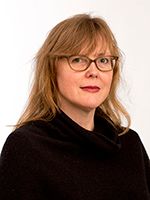
Project: NORN: Norwegian Romantic Nationalisms
Summary
Duration: Start date: 2023-01-01, End date: 2027-12-31
Call: SH5, ERC-2021-AdG
Summary: NORN seeks to uncover both the affective and ideological dynamics of romantic nationalism, examining how collective emotions related to the idea of the nation were harnessed, activated, and constructed through literature and theater, using Norway as a case study. NORN forges a highly innovative approach combining cultural studies, affect theory, critical race studies, and reception studies with qualitative methods taken from literary studies and history as well as quantitative methods from the digital humanities in order to achieve three interconnected objectives: 1) a comprehensive modeling of nineteenth-century Norwegian literature using machine learning, 2) a meta-critical re-assessment of literary historiography as an explicitly romantic nationalist project, and 3) a radical re-evaluation of the impact of transnational romantic performance culture on nation-building. NORN approaches romantic nationalism from two distinctive perspectives: on the one hand the project seeks to understand the affective register of romantic nationalism qualitatively, which entails meticulous investigation of a wide range of sources through an innovative combination of theoretical lenses in order to recontextualize it as what Raymond Williams famously called a “structure of feeling.” On the other hand, NORN profoundly decontextualizes the literary works themselves through so-called “distant reading” methods, carrying out an ambitious computational modeling of the entire nineteenth-century literary field; this will enable an interrogation of prevailing master narratives about periodization and processes of inclusion/exclusion, delineating romantic nationalism based on far more transparent criteria than those that underpin traditional literary historiographical methods.
Professor B?rd Harstad
Faculty of Social Science, Department of Economics
Project: EXPLOIT: ENVIRONMENTAL EXPLOITATION OF POLITICAL ECONOMICS
Summary
Duration: Start date: 2023-01-01, End date: 2027-12-31
Call: SH1, ERC-2021-AdG
Summary: We need a theory to explain why society has so far failed to address climate change and other environmental problems. After all, it has been able to deal with other challenges, ranging from wars to trade barriers and, most recently, Covid-19. In this project, we seek to shed light on two important questions: I. What political economics forces explain the failure to deal with environmental problems? II. How can environmental agreements and contracts exploit domestic political forces? The first, positive, part seeks to develop dynamic political economics models that can be combined with models of climate change and other environmental problems. The goal is to learn more about what political economics forces or constraints are best able to explain the observed inefficiencies in environmental policies. This knowledge is necessary before we can analyse which policies are best – subject to the relevant constraints. The second, normative, part is more groundbreaking because it investigates how international environmental policies can exploit the political forces that are important at the domestic level. Intuitively, when desirable policies are hindered by political forces, such as present bias and time inconsistency, an incumbent may value a treaty that offers pre-commitments or credibility. This value implies that the incumbent can be persuaded to contribute more (to emission cuts, for example) if the agreement is designed so that it helps the incumbent overcome domestic political constraints. By drawing on contract theory and organizational economics, we will investigate how international policies can exploit time-inconsistent incumbents’ demands for commitment, how status-quo biases offer credibility, and how inattention permits persuasion. The project will contribute methodologically to political economics and contract theory. The lessons for policymakers may be invaluable.
Professor Jan Helge Solbakk
Faculty of Medicine, Institute of Health and Society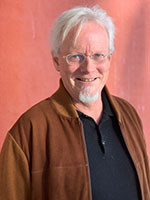
Project: MORE: Moral residue - epistemological ramifications, ethical implications and didactic opportunities
Summary
Duration: Start date: 2022-09-01, End date: 2027-08-31
Call: LS7, ERC-2021-AdG
Summary: This project is a contribution to moral philosophy, to the didactics of transformative reading and to medical ethics education. It examines moral residue (MR); the distress experience common among health care practitioners as well as other moral agents of recognizing what they take to be their own failure to meet a moral requirement, despite not being fully blameworthy for that failure; and which they express through regret or anguish. Our overall aim is threefold: (1) to substantially advance the philosophical and phenomenological understanding of MR, as a concept and as an experience, by analysing situations of MR caused by moral dilemmas, and by directing attention to situations that have not been explored or are under-explored - MR caused by unavoidable normative ignorance or by impermissible emotions; (2) to empirically study the impact of literary narrative fiction (that is thematically related to MR) in altering concepts of self and others, a process we call “transformative reading”, and (3) to devise, and to empirically test the potential merits of a novel narrative method for medical ethics education that we believe can enable health care practitioners to learn how to acknowledge their inherent vulnerability to MR, and to accept that they are likely to fail morally in ways that they may not be able to avoid, without this acceptance compromising their sense of dignity as moral agents. The aims are intimately connected in that it is the philosophical research into MR which motivates and enables the didactic part of the project, and which thereby binds it together into an integrated whole. The investigation is conducted in health care because this context makes apparent the full range of contingencies in life that impose limits to the rational exercise of moral agency, and which thereby lock agents into diversified situations of MR. However, since MR is pervasive also outside of health care, we believe it will benefit other branches of applied ethics as well.
Professor ?ystein Linnebo
Faculty of Humanities, Department of Philosophy, Classics, History of Arts and Ideas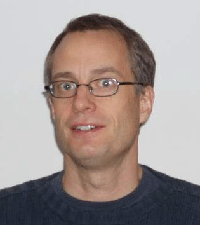
Project: C-FORS: Construction in the Formal Sciences
Summary
Duration: Start date: 2023-01-01, End date: 2027-12-31
Call: SH4, ERC-2021-AdG
Summary: The notion of construction figures centrally in mathematics and other formal sciences. An idealized, infinitary constructional approach is successfully applied to set theory, which provides the foundation for contemporary mathematics. C-FORS aims to develop new, similarly groundbreaking applications of the constructional approach. This will be the largest concerted effort to date to develop a foundation for the study of intensional entities, e.g. propositions and properties, where a variety of paradoxes still arise, with no agreed-upon solution—nearly a century after set theory received its proper foundation. However, infinitary constructions are poorly understood, and there is no known way to apply the constructional approach to intensional entities. C-FORS aims to overcome these limitations by developing a critical but liberal conception of construction inspired by my increasingly popular potentialist metaphysics and philosophy of mathematics, and by using two theoretical tools developed by me, inspired by constructive mathematics, but only recently generalized so as to overcome various limitations and thus permit novel applications. C-FORS makes a range of groundbreaking applications of these tools, thus achieving a lasting impact on several disciplines. In philosophy, I provide radical alternatives to the currently fashionable use of typed languages and exotic non-classical logics. In the foundations of mathematics, I develop a pioneering constructional approach that retains the strength of set theory, while incorporating insights from the constructive tradition. I launch a rigorous approach to constructed entities in formal ontology. In formal semantics, I develop novel theories of propositions and properties, and a new logical foundation for the study of nominalization and group formation. Overall, C-FORS offers pioneering interdisciplinary research where philosophy and logic yield— and are themselves constrained by—novel applications to the formal sciences.
Professor Francois Renard 
Faculty of Mathematics and Natural Sciences, Department of Chemistry
Project: BREAK: Break-Through Rocks
Summary
Duration: Start date: 2022-01-01, End date: 2026-12-31
Call: PE10, ERC-2020-AdG
Summary: Deformation in Earth’s crust localizes onto faults that may rupture rapidly producing earthquakes or undergo slow aseismic slip. The detailed mechanisms that control the transition between the seismic and aseismic regimes and the onset of earthquakes remain unknown. These mechanisms control the geophysical processes preceding catastrophic failure, such as fracture development and strain localization on faults and in the rock volumes surrounding them. Our goal is to provide the first quantitative laboratory observations of the full displacement field in rocks before and during fault slip, and separate the aseismic and seismic components of it. We will develop novel experimental techniques based primarily on simultaneous dynamic synchrotron X-ray microtomography imaging and acoustic emission data acquisition and analysis. The data will reveal how slow and fast deformations develop and interact with each other in dry and wet crustal rocks under the stress, fluid pressure and temperature conditions at depths up to 10 km, and characterize the production of fractures during earthquake nucleation and rupture propagation. We will search for weak signals before dynamic rupture and develop ways to predict the time to failure from these signals. If we can demonstrate that the joint analysis of acoustic emission signals and X-ray microtomography data can be used to predict dynamic rupture in our experiments, we will have discovered an important lead towards earthquake prediction, which we will pursue in follow-up projects. We will compare the deformation microstructures produced in laboratory experiments with those of natural rock samples collected in California and Norway, where earthquakes occurred. The overarching goal is to progress toward a general model of the path to brittle failure in rocks by advancing knowledge of how fractures accumulate before and during both slow and fast earthquakes, under dry conditions and in the presence of water
Professor Ildar Garipzanov 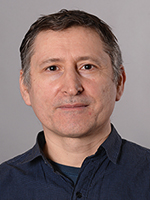
Faculty of Humanities, Department of Archeology, Conservation and History
Project: MINiTEXTS: Minuscule Texts: Marginalized Voices in Early Medieval Latin Culture (c. 700–c. 1000)
Summary
Duration: Start date: 2022-01-01, End date: 2026-12-31
Call: SH6, ERC-2020-AdG
Summary: MINiTEXTS seeks to systematically study early medieval minuscule texts, i.e. short texts of which large numbers were added to blank spaces of Latin manuscripts from c. 700 to c. 1000 and which manuscript scholars refer to as “microtexts,” “guest texts,” or “additions.” Unlike such manuscripts’ main texts, minuscule texts are seldom characterized by identifiable authors or easily traceable histories of textual transmission. As a result, textual and cultural historians tended to either neglect them or compartmentalize them within highly specialized disciplines. By contrast, MINiTEXTS examines minuscule texts across commonly accepted disciplinary boundaries, as a unique corpus of practical knowledge deeply embedded in the social praxis of early medieval society. By establishing the first taxonomy of such texts, MINiTEXTS will fill a significant gap in knowledge of their production, use, and functions. Further, MINiTEXTS aspires to understand the “social logic” of minuscule texts as well as the social, religious, and cultural practices that they signify by developing a transferable methodology inspired by theoretical insights and methods of cultural history, material philology, material codicology, performative theory, and digital humanities. By analyzing historical, textual, codicological, and performative contexts of individual minuscule texts and setting the resulting microhistories within a longue durée perspective, MINiTEXTS promises significant gain in the understanding of early medieval heterogenous culture. MINiTEXTS will thus allow the hitherto marginalized voices of early medieval manuscript culture to be articulated in the current debates over several intertwined issues of medieval cultural history, such as the correlation between the norm and diversity in liturgical practices, the interplay among orthodoxy, heterodoxy, and deviance in religious practices, and the relationships among religion, magic, and medicine in medieval culture.
Professor Arild Engelsen Ruud (beneficiary)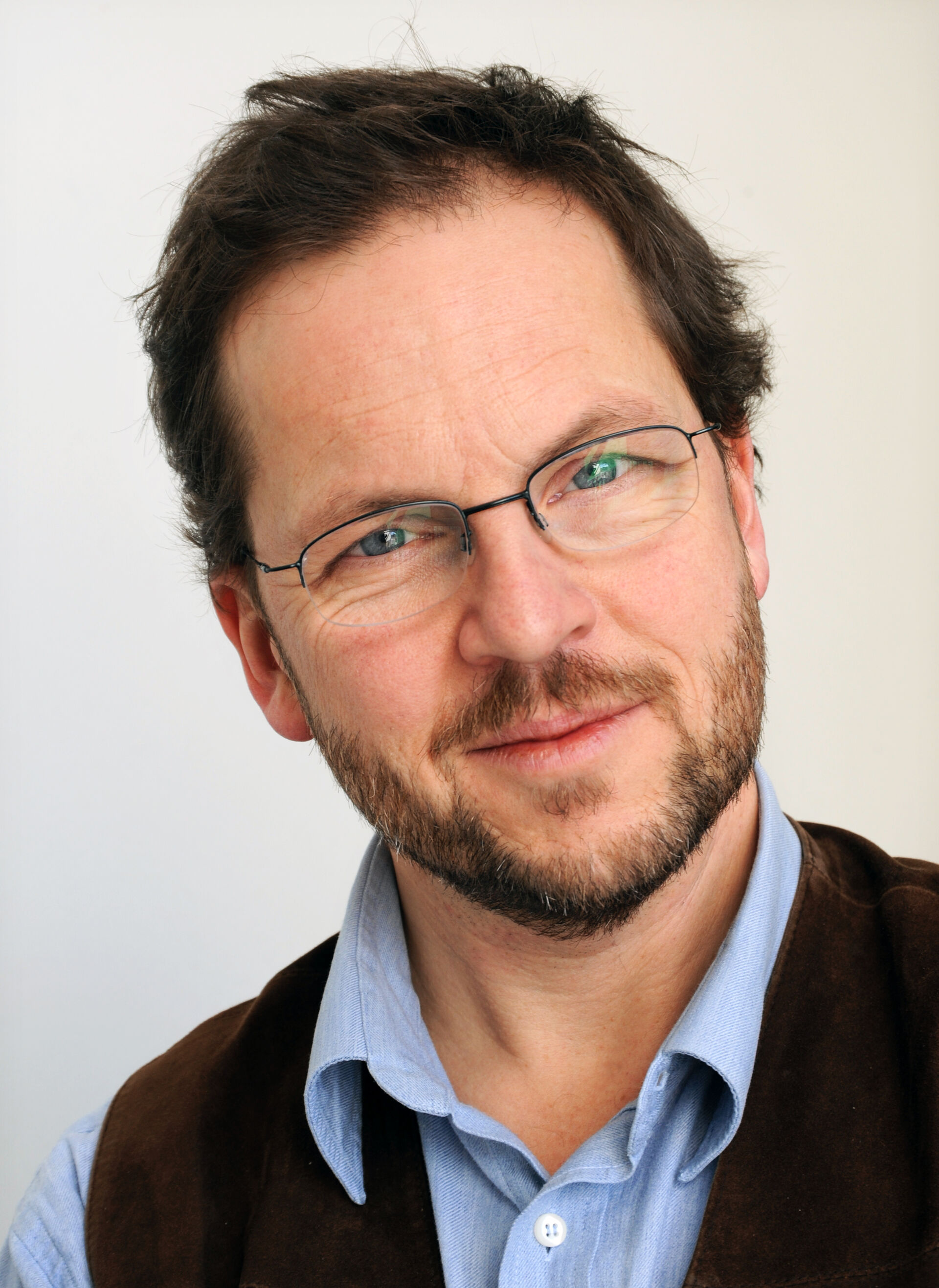
Faculty of Humanities, Department of Culture Studies and Oriental Languages
Project: EXTORT: Anthropologies of Extortion
PI: Lucia Michelutti, University College London
Summary
Duration: Start date: 2021-01-01, End date: 2025-12-31
Call: SH3, ERC-2019-AdG
Summary: Extortion had come to occupy a quintessential position in the global imaginary of mafia-type-criminal organizations. Yet it is also increasingly present beyond clandestine criminal networks and is becoming a normalised profitable source of livelihood and governance and a key visible social relation in many parts of the world. Systematic research on and explanatory models for the apparent expansion and rountinisation of extortion in everyday life (including cyber-extortion) are currently lacking. Timely, the project sets up extortion as an object of anthropological inquiry and charts the first comprehensive cross-cultural account of extortion in social life across South and East Asia, the Americas, Africa and Europe. The proposed program of work consists of 5 main components: 1) Primary research on ‘offers that cannot be refused' across different domains of life in and across 22 settings; 2) Analytical and theoretical development in the study of power, consent and organized crime; 3) Methodological innovation by conducting a simultaneous cross-national ethnographic research and adding a South-to-South comparative angle in an area dominated by single case studies and a focus on the Global North; 4) Capability enhancement by forging an international network of scholars in the emerging field of the anthropology of crime and supporting the careers of the project's 5 Post-docs; 5) Policy relevant research in the fields of violence and consent, organized crime, informal economy and development. The study capitalises on previous research and skills of the PI in the cross-cultural study of bossism, politics and kinship and 'mafias' in the global South. Research will be embedded in anthropology but informed by empirical and analytical questions relevant to criminology, political science, economics and development studies.
Professor Armin Wisthaler (beneficiary)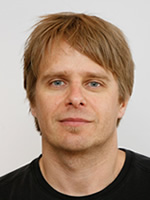
Faculty of Mathematics and Natural Sciences, Department of Chemistry
Project: EPHEMERAL: Detection and Speciation of Gas-Phase Atmospheric Peroxy and Criegee Radicals
PI: Barbara Nozière, Centre National de la Recherche Scientifique
Summary
Duration: Start date: 2021-04-01, End date: 2026-03-31
Call: PE10, ERC-2019-AdG
Summary: Earth’s lower atmosphere is oxidative and its chemistry consists of reactions of short-lived chemical compounds called radicals, controlling the abundance of key compounds, such as of ozone and greenhouse gases. In spite of decades of investigation many atmospheric observations indicate that important aspects of this radical chemistry remain ill-understood, in particular in the reactions of the multitude of organic radicals present in the atmosphere, peroxy radicals (“RO2”) and Criegee Intermediates (“CI”). Detailed investigations of these reactions have been limited for over 50 years by instrumental challenges, in particular by the lack of technique detecting individual radicals (”speciation”). Recently, the Nozière group achieved an important milestone by developing the first technique, based on Chemical Ionization Mass Spectrometry or “CIMS”, speciating the volatile RO2 that are important for the atmospheric oxidation cycles. The objective of EPHEMERAL is to solve key questions in atmospheric radical chemistry by overcoming the long-standing instrumental challenges with cutting-edge developments based on this new technique. Three strategic directions will be pursued: - in laboratory, the detection of CI will be investigated and gas-phase reactions of RO2 and CI studied, - an instrument will be built to detect individual RO2 and CI in the atmosphere, thus achieving a historical milestone, - the reactivity of these radicals at/with surfaces will be investigated in laboratory, assessing for the first time the role of clouds and aerosols in the oxidation cycles and setting the bases for next-generation challenges. The fundamental knowledge and atmospheric observations resulting from this project will dramatically improve the understanding of the oxidation cycles and the predictions of the atmospheric chemical composition, from the regional to the climate scale. EPHEMERAL will thus place Europe at the leading edge in the discipline, scientifically and technologically.
Professor Harald Stenmark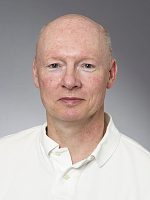
Faculty of Medicine, Centre for Cancer Cell Reprogramming
Project: Coincidence detection of proteins and lipids in regulation of cellular membrane dynamics (CODE)
Summary
Duration: Start date: 2019-01-01, End date: 2023-12-31
Call: LS3, ERC-2017-ADG
Summary: Specific recruitment of different proteins to distinct intracellular membranes is fundamental in the biology of eukaryotic cells, but the molecular basis for specificity is incompletely understood. This proposal investigates the hypothesis that coincidence detection of proteins and lipids constitutes a major mechanism for specific recruitment of proteins to intracellular membranes in order to control cellular membrane dynamics. CODE will establish and validate Mathematical models for coincidence detection, identify and functionally characterise novel coincidence detectors, and engineer artificial coincidence detectors as novel tools in cell biology and biotechnology.
Professor Jukka Corander
Faculty of Medicine, Institute of Basic Medical Sciences
Project: SCARABEE, calable inference algorithms for Bayesian evolutionary epidemiology
Summary
Duration: Start date: 2017-05-01, End date: 2022-04-30
Call: LS6, ERC-2016-ADG
Summary: Advances in sequencing technologies are currently providing an unprecedented opportunity to a detailed discovery of the mechanisms involved in the evolution and spread of microbes causing human infectious disease. Simultaneously the developers of statistical methods face an enormous challenge to cope with the wealth of data brought by this opportunity. We have very recently demonstrated the ability of our advanced computational approaches to deliver breakthroughs in understanding pathogen evolution and transmission in numerous highlight results published in Science, PNAS and topranking Nature journals. The rise of microbial Big Data gives a promise of a giant leap in making causal discoveries, however, the existing statistical methods are neither able to cope with the size and complexity of the emerging data sets nor designed to answer the novel biological questions they enable. To fulfil the promise of giant leaps SCARABEE will leverage scalable inference methods by a unique combination of machine learning algorithms and Bayesian statistical models for evolutionary epidemiology. We focus on central biological questions about adaptation, epistasis, genome evolution and transmission of microbes causing infectious disease. The Big Data combined with the novel inference methods will make it possible to answer a multitude of important questions that remain currently intractable. Through our close collaboration With the leading research centres in infectious disease epidemiology and genomics we expect the SCARABEE project to considerably advance understanding of the evolution and transmission of numerous pathogens that pose a major threat to human health, which will be important for reducing their disease burden in the future. Large-scale biological data will be used to benchmark the developed methods, which will be made publicly available as free software packages to benefit the wide community of microbiologists and infectious disease epidemiologists.
Professor Bj?rn Jamtveit
Faculty of Mathematics and Natural Sciences, Department of Geosciences
Project: DIME: Disequilibirum metamorphism of stressed lithosphere
Summary
Duration: Start date: 2015-09-01, End date: 2020-08-31
Call: PE10, ERC-2014-ADG
Summary: Most changes in mineralogy, density, and rheology of the Earth’s lithosphere take place by metamorphism, whereby rocks evolve through interactions between minerals and fluids. These changes are coupled with a large range of geodynamic processes and they have first order effects on the global geochemical cycles of a large number of elements. In the presence of fluids, metamorphic reactions are fast compared to tectonically induced changes in pressure and temperature. Hence, during fluid-producing metamorphism, rocks evolve through near-equilibrium states. However, much of the Earth’s lower and middle crust, and a significant fraction of the upper mantle do not contain free fluids. These parts of the lithosphere exist in a metastable state and are mechanically strong. When subject to changing temperature and pressure conditions at plate boundaries or elsewhere, these rocks do not react until exposed to externally derived fluids. Metamorphism of such rocks consumes fluids, and takes place far from equilibrium through a complex coupling between fluid migration, chemical reactions, and deformation processes. This disequilibrium metamorphism is characterized by fast reaction rates, release of large amounts of energy in the form of heat and work, and a strong coupling to far-field tectonic stress. Our overarching goal is to provide the first quantitative physics-based model of disequilibrium metamorphism that properly connects fluid-rock interactions at the micro and nano-meter scale to lithosphere scale stresses. This model will include quantification of the forces required to squeeze fluids out of grain-grain contacts for geologically relevant materials (Objective 1), a new experimentally based model describing how the progress of volatilization reactions depends on tectonic stress (Objective 2), and testing of this model by analyzing the kinetics of a natural serpentinization process through the Oman Ophiolite Drilling Project.
Professor Ragnar Winther
Faculty of Mathematics and Natural Sciences, Department of Mathematics
Project: FEEC-A: Finite Element Exterior Calculus and Applications
Summary
Duration: Start date: 2014-02-01, End date: 2019-01-31
Call: PE1, ERC-2013-ADG
Summary: The finite element method is one of the most successful techniques for designing numerical methods for systems of partial differential equations (PDEs). It is not only a methodology for developing numerical algorithms, but also a mathematical framework in which to explore their behaviour. The finite element exterior calculus (FEEC) provides a new structure that produces a deeper understanding of the finite element method and its connections to the partial differential equation being approximated. The goal is to develop discretizations which are compatible with the geometric, topological, and algebraic structures which underlie well-posedness of the partial differential equation. The phrase FEEC was first used in a paper the PI wrote for Acta Numerica in 2006, together with his coworkers, D.N. Arnold and R.S. Falk. The general philosophy of FEEC has led to the design of new algorithms and software developments, also in areas beyond the direct application of the theory. The present project will be devoted to further development of the foundations of FEEC, and to direct or indirect use of FEEC in specific applications. The ambition is to set the scene for a nubmer of new research directions based on FEEC by giving ground-braking contributions to its foundation. The aim is also to use FEEC as a tool, or a guideline, to extend the foundation of numerical PDEs to a variety of problems for which this foundation does not exist. The more application oriented parts of the project includes topics like numerical methods for elasticity, its generalizations to more general models in materials science such as viscoelasticity, poroelasticity, and liquid crystals, and the applications of these models to CO2 storage and deformations of the spinal cord.
Professor ?ystein Kravdal (participant)
Faculty of Social Sciences, Department of Economics
Project: FAMHEALTH: Family life courses, intergenerational exchanges and later life health
PI: Professor Emily Marjatta Dorothea Grundy at the London School of Economics and Political Science (LSE)
Summary
Duration: Start date: 2013-07-01, End date: 2018-06-30
Call: SH3, ERC-2012-ADG
Summary: The overall aim of this research programme is to uncover how family life courses influence health and well-being in later adulthood, whether family related strengths or disadvantages relevant to health offset or compound socio-economic sources of disadvantage, and the extent to which these associations are influenced by societal factors. An important element will be to consider the role of intergenerational influences, including support flows. The geographical focus will be on Europe and the methodological focus on the advanced quantitative analysis of large scale longitudinal data sets. These data sets, chosen for their complementary strengths, will include both country specific and cross national sources. Three major interlinked strands of work will be undertaken. These will focus on 1) Impacts of parenting and partnership histories on health and mortality in mid and later life. 2) Intergenerational support exchanges: demographic, cultural and policy influences and effects on health of both providers and receivers. 3) An over arching theme to be addressed in the above strands and consolidated in the third is how investments in family and social networks are related to socio-economic disparities in later life health and mortality. The programme is will bring together perspectives from a range of disciplines to address issues of great relevance to current policy challenges in Europe. It is challenging because of the problem of dealing with issues of health selection and possible bias arising from various kinds of missing data which will require methodological care and innovation. Results will contribute to the development of theory, the development of methods and provide substantive knowledge relevant to the health and well-being of older Europeans.
Professor Christoph Gradmann (participant)
Institute of Health and Society, Faculty of Medicine
Project: GLOBHEALTH: From International Public Health to Global Health
PI: Professor Jean-Paul Gaudilliere, Institut National De La Sante Et De La Recherche Medicale (Inserm)
Summary
Duration: Start date: 2014-08-01, End date: 2019-07-31
Call: SH3, ERC-2013-ADG
Summary: This project aims at a socio-historical study of the transition between the two regimes of knowledge and action, which have characterized the government of health after World War II: the regime of international public health, dominating during the first decades of the postwar era, which was centered on eradication policies, nation-states and international UN organizations; the present regime of global health, which emerged in the 1980s and is centered on risk management and chronic diseases, market-driven regulations, and private-public alliances.
The project seeks to understand this transition in terms of globalization processes, looking at the making of knowledge, the production and commercialization of health goods, the implementation of public health programs, and routine medical work. It will focus on four fields of investigations: tuberculosis, mental health, traditional medicine and medical genetics in order to understand how categories, standardized treatment regimens, industrial products, management tools or specific specialties have become elements in the global government of health. The project associates historical and anthropological investigations of practices in both international and local sites with strong interests in: a) the changing roles of WHO; b) the developments taking place in non-Western countries, India in the first place.
The expected benefits of this research strategy are: a) to take into account social worlds including laboratories, hospitals, enterprises, public health institutions and international organizations; b) to approach the global as something translated in and emerging from local practices and local knowledge; c) to explore different levels of circulations beyond the classical question of North-South transfers; d) to deepen our understanding of the transition from the political and economical order of the Cold War into a neo-liberal and multi-centric age of uncertainty.
Researcher Barbara Bramanti
Faculty of Mathematics and Natural Sciences, Centre for Ecological and Evolutionary Synthesis
Project: MEDPLAG: The medieval plagues: ecology, transmission modalities and routes of the infections
Summary
Duration: Start date: 2013-06-01, End date: 2018-05-31
Call: SH6, ERC-2012-ADG
Summary: The history of late medieval and early modern Europe was deeply affected by epidemics of plague that repeatedly broke out until 1750 AD and caused devastation and death with severe social, political and economic consequences. For decades, historians and scientists have been interested in the ancient pestilences and disputed their origin and epidemiology. One century ago, Yersinia pestis was identified as the causative agent of the current-day pandemic. Only some months ago the MedPlag team conclusively established (Haensch et al. 2010) that this bacterium was responsible for the Black Death (1346-1353 AD) and that two distinct variants of Y. pestis were simultaneously circulating through Europe during this pandemic. These results raise questions concerning the historic Y. pestis strains, their geographical origin, and whether they might have re-circulated in Europe over four centuries or were constantly reintroduced from elsewhere. Other open questions concern the routes of transmission of the medieval plagues and the role played by trade and pilgrimages in their dissemination, the mechanisms of transmission and the implication of wild and anthropochorous fauna, and the interplay between climatic conditions and plague dynamics. In addition, whether the reason for the disappearance of plague from Europe 250 years ago was due to improved hygiene or to genetic or environmental change remains unknown. Finally, while historians and scientists have speculated on the microbe responsible for the Justinian plague (541-542 AD) molecular evidence is still lacking. In this proposal, I outline the methodology by which I will answer these major questions with an inter-domain investigation involving ancient DNA, climatology, ecology, and history. The results of this work will not only settle century-old controversies by giving us valuable information about the past, but also furnish a paradigm for understanding the modality of serious epidemics in Europe; past, present, and future.
Professor Kjetil Storesletten
Faculty of Social Sciences, Department of Economics
Project: MACROINEQUALITY: The Macroeconomics of Inequality, Development and the Welfare State
Summary
Duration: Start date: 2013-06-01, End date: 2018-05-31
Call: SH1, ERC-2012-ADG
Summary: This project will develop macro models with heterogeneity across people and firms to understand the consequences of two profound macro trends: the economic transformation of China and the rising cross-sectional inequality in many countries. The ultimate aim is to help these models become everyday tools in macro, development/labour economics, and actual policy making. Inequality and human capital accumulation is an important theme. I will develop tractable models of the equity-efficiency tradeoffs under risk and imperfect financial markets. Due to novel general equilibrium effects, progressive taxation is particularly distortive for education choices. This calls for complementary policies. I also explore the nexus between inequality and aggregate risk, the interaction between inequality and the dynamics of political conflict, and the puzzling success of the Scandinavian welfare model. The project will provide sharper tools for policy analysis. A key aim is to integrate models of mistakes into structural macro models. While such models generally assume rationality, welfare programs are often geared to precisely address negative consequences of human errors. Assuming information is costly, I will quantify bounds on rationality to match observed behaviour. The framework has a wide range of potential uses. I will use it to reevaluate government programs. A large part of the project focuses on China. The rapid economic transformation of emerging economies has raised many new questions for economic theory and policy. I will marshal the use of models with heterogeneity to address these issues. A key goal is to develop a quantitative structural model that can become the benchmark model of fiscal policy analysis and long-run forecasts in China. As an application, I will study cost and gains of various redistribution programs. The project also aims at examining the sources of growth and inflation in China and, ultimately, understanding the culprit of the Chinese growth miracle.
Professor Andreas Max K??b
Faculty of Mathematics and Natural Sciences, Department of Geosciences
Project: ICEMASS: Global Glacier Mass Continuity
Summary
Duration: Start date: 2013-03-01, End date: 2018-02-28
Call: PE10, ERC-2012-ADG
Summary: For the first time in history satellite data and respective archive holdings are now sufficient in terms of their spatial and temporal resolution, and their accuracy, to measure volume changes, velocities and changes in these velocities over time for glaciers and ice caps other than ice sheets on a global scale. The ICEMASS project will derive and analyse glacier thickness changes using satellite laser and radar altimetry, and satellite-derived and other digital elevation models, and convert these to a global glacier mass budget. Such data set will enable major steps forward in glacier and Earth science, in particular: constrain current sea-level contribution from glaciers; complete climate change patterns as reflected in glacier mass changes; quantify the contribution of glacier imbalance to river run-off; allow to separate glacier mass loss from other components of gravity changes as detected through satellite gravimetry; and allow improved modelling of the isostatic uplift component due to current changes in glacier load. These results will be connected to global-scale glacier dynamics, for which a global set of repeat optical and radar satellite images will be processed to measure displacements due to glacier flow and their annual to decadal-scale changes. The analysis of these data will enable several major steps forward in glacier and Earth science, in particular: progress the understanding of glacier response to climate and its changes; provide new insights in processes underlying spatio-temporal variability and instability of glacier flow on decadal scales; improve understanding of dynamic thickness change effects; allow estimating global calving fluxes; progress understanding of transport in glaciers and their role in landscape development; and help to better assess potentially hazardous glacier lakes.
Professor Thomas Hylland Eriksen
Faculty of Social Sciences, Department of Social Anthropology
Project: OVERHEATING: The three crises of globalisation: An anthropological history of the early 21st century
Summary
Duration: Start date: 2012-07-01, End date: 2017-06-30
Call: SH3, ERC-2011-ADG
Summary: The research literature on various dimensions of globalisation is enormous, yet this project constitutes the first major attempt to weave disparate empirical strands together within a shared conceptual framework, namely that of crises resulting from the acceleration and intensification of global processes. Three major crises of globalisation are to be explored and analysed. In the realm of environmental issues/climate change, the quest for transnational legal arrangements ensuring sustainability is counteracted by continued growth in the factors leading to environmental crises. In the financial and economic realm, the vulnerability of the global system became apparent during the recent financial crisis, which continues to send ripples through economies worldwide. In the area of culture contact and cultural sustainability, tensions and frictions with strong elements of identity politics intensify owing to increased interaction and resource competition, at the same time as calls for cosmopolitan values and universalization of human rights constitute attempts to overcome conflicts. A key term is sustainability in the sense of reproductive capability, and the main research question is to what extent contemporary world society is sustainable in relation to the three crises and their internal dialectics. The project will entail in-depth ethnographic studies, global surveys (drawing chiefly on extant research literature) and comparison. It will result in two Ph D dissertations, academic articles (written by postdoctoral fellows) and a major monograph, as well as an edited volume, academic articles and a book for a general audience, all written by the PI. This interdisciplinary and comparative project, based mainly on anthropological approaches, aims to build theory and analyse empirical processes shedding light on, and creating a fuller understanding of, the transitions characterising the present world. The intellectual and societal relevance is potentially huge.
Professor Mats Carlsson
Faculty of Mathematics and Natural Sciences, Institute of Theoretical Astrophysics
Project: CHROMPHYS: Physics of the Solar Chromosphere
Summary
Duration: Start date: 2012-01-01, End date: 2016-12-31
Call: PE9, ERC-2011-ADG
Summary: CHROMPHYS aims at a breakthrough in our understanding of the solar chromosphere by combining the development of sophisticated radiation-magnetohydrodynamic simulations with observations from the upcoming NASA SMEX mission Interface Region Imaging Spectrograph (IRIS). The enigmatic chromosphere is the transition between the solar surface and the eruptive outer solar atmosphere. The chromosphere harbours and constrains the mass and energy loading processes that define the heating of the corona, the acceleration and the composition of the solar wind, and the energetics and triggering of solar outbursts (filament eruptions, flares, coronal mass ejections) that govern near-Earth space weather and affect mankind's technological environment. CHROMPHYS targets the following fundamental physics questions about the chromospheric role in the mass and energy loading of the corona: - Which types of non-thermal energy dominate in the chromosphere and beyond? - How does the chromosphere regulate mass and energy supply to the corona and the solar wind? - How do magnetic flux and matter rise through the chromosphere? - How does the chromosphere affect the free magnetic energy loading that leads to solar eruptions? CHROMPHYS proposes to answer these by producing a new, physics based vista of the chromosphere through a three-fold effort: - develop the techniques of high-resolution numerical MHD physics to the level needed to realistically predict and analyse small-scale chromospheric structure and dynamics, - optimise and calibrate diverse observational diagnostics by synthesizing these in detail from the simulations, and - obtain and analyse data from IRIS using these diagnostics complemented by data from other space missions and the best solar telescopes on the ground.
Professor Andreas F?llesdal
Faculty of Law, Centre for the Study of the Legitimate Roles of the Judiciary in the Global Order
Project: MULTIRIGHTS: The Legitimacy of Multi-level Human Rights Judiciary
Summary
Duration: Start date: 2011-06-01, End date: 2016-05-31
Call: SH2, ERC-2010-AdG
Summary: The proliferation of human rights treaties at regional and global levels may offer moral foundations for international law. However, many worry that this growth of supervisory organs is illegitimate. Consider, for instance - The European Court of Human Rights (ECtHR) is overburdened. - The human rights organs may disagree e.g. on how to balance freedom of expression against protection from hate speech. Which should be obeyed- - Citizens of well-functioning democracies ask: why should such international organs intervene- The MultiRights team of international lawyers and political theorists will first scrutinize the claims of legitimacy deficits. We then consider reform proposals for global and European human rights organs: We develop four plausible models, ranging from Primacy of National Courts to a World Court of Human Rights. We will assess the models by four Contested Constitutional Principles of legitimacy, revised for our multilevel legal order: Human Rights values, the Rule of Law, Subsidiarity, and Democracy. MultiRights thereby provides reasoned comparative assessment of models for human rights regime reforms, and contributes to better standards of legitimacy for international institutions. The findings also help us understand and assess the alleged 'Constitutionalisation of International Law- - an urgent topic under globalization, when governance beyond states increases in density and impact. The academic contributions of MultiRights will also benefit several reforms: - the Interlaken Process on how to improve the ECtHR, - the accession of the EU to the European Convention on Human Rights under the Lisbon Treaty, - the UN Secretary General-s calls to reform the Human Rights treaty body system, and - challenges to the democratic credentials of such human rights review.
Professor Trond Helge Torsvik
Faculty of Mathematics and Natural Sciences, Center for Earth Evolution and Dynamics
Project: BPT: Beyond Plate Tectonics
Summary
Duration: Start date: 2011-05-01, End date: 2016-04-30
Call: PE10, ERC-2010-AdG
Summary: Plate tectonics characterises the complex and dynamic evolution of the outer shell of the Earth in terms of rigid plates. These tectonic plates overlie and interact with the Earth's mantle, which is slowly convecting owing to energy released by the decay of radioactive nuclides in the Earth's interior. Even though links between mantle convection and plate tectonics are becoming more evident, notably through subsurface tomographic images, advances in mineral physics and improved absolute plate motion reference frames, there is still no generally accepted mechanism that consistently explains plate tectonics and mantle convection in one framework. We will integrate plate tectonics into mantle dynamics and develop a theory that explains plate motions quantitatively and dynamically. This requires consistent and detailed reconstructions of plate motions through time (Objective 1). A new model of plate kinematics will be linked to the mantle with the aid of a new global reference frame based on moving hotspots and on palaeomagnetic data. The global reference frame will be corrected for true polar wander in order to develop a global plate motion reference frame with respect to the mantle back to Pangea (ca. 320 million years) and possibly Gondwana assembly (ca. 550 million years). The resulting plate reconstructions will constitute the input to subduction models that are meant to test the consistency between the reference frame and subduction histories. The final outcome will be a novel global subduction reference frame, to be used to unravel links between the surface and deep Earth (Objective 2).
Professor Ludvig Magne Sollid
Faculty of Medicine, Centre for Immune Regulation
Project: AUTO-CD: Coeliac Disease: Understanding How a Foreign Protein Drives Autoantibody Formation
Summary
Duration: Start date: 2011-05-01, End date: 2017-04-30
Call: LS6, ERC-2010-AdG
Summary: The goal of this project is to understand the mechanism of how highly disease specific autoantibodies are generated in response to the exposure to a foreign antigen. IgA autoantibodies reactive with the enzyme transglutaminase 2 (TG2) are typical of coeliac disease (CD). These antibodies are only present in subjects who are HLA-DQ2 or -DQ8, and their production is dependent on dietary gluten exposure. This suggests that CD4+ gluten reactive T cells, which are found in CD patients and which recognise gluten peptides deamidated by TG2 in context of DQ2 or DQ8, are implicated in the generation of these autoantibodies. Many small intestinal IgA+ plasma cells express membrane Ig hence allowing isolation of antigen specific cells. Whereas control subjects lack anti-TG2 IgA+ plasma cells, on average 10% of the plasma cells of CD patients are specific for TG2. We have sorted single TG2 reactive IgA+ plasma cells, cloned their VH and VL genes and expressed recombinant mAbs. So far we have expressed 26 TG2 specific mAbs. There is a strong bias for VH5-51 usage, and surprisingly the antibodies are modestly mutated. TG2 acts on specific glutamine residues and can either crosslink these to other proteins (transamidation) or hydrolyse the glutamine to a glutamate (deamidation). None of the 18 mAbs tested affected either transamidation or deamidation leading us to hypothesise that retained crosslinking ability of TG2 when bound to membrane Ig of B cells is an integral part of the anti-TG2 response. Four models of how activation of TG2 specific B cells is facilitated by TG2 crosslinking and the help of gluten reactive CD4 T cells are proposed. These four models will be extensively tested including doing in vivo assays with a newly generated transgenic anti-TG2 immunoglobulin knock-in mouse model.
Professor Trygve Helgaker
Faculty of Mathematics and Natural Science, Department of Chemistry
Project: ABACUS: Ab-initio adiabatic-connection curves for density-functional analysis and construction
Summary
Duration: Start date: 2011-03-01, End date: 2016-02-29
Call: PE4, ERC-2010-AdG
Summary: Quantum chemistry provides two approaches to molecular electronic-structure calculations: the systematically refinable but expensive many-body wave-function methods and the inexpensive but not systematically refinable Kohn Sham method of density-functional theory (DFT). The accuracy of Kohn Sham calculations is determined by the quality of the exchange correlation functional, from which the effects of exchange and correlation among the electrons are extracted using the density rather than the wave function. However, the exact exchange correlation functional is unknown—instead, many approximate forms have been developed, by fitting to experimental data or by satisfying exact relations. Here, a new approach to density-functional analysis and construction is proposed: the Lieb variation principle, usually regarded as conceptually important but impracticable. By invoking the Lieb principle, it becomes possible to approach the development of approximate functionals in a novel manner, being directly guided by the behaviour of exact functional, accurately calculated for a wide variety of chemical systems. In particular, this principle will be used to calculate ab-initio adiabatic connection curves, studying the exchange correlation functional for a fixed density as the electronic interactions are turned on from zero to one. Pilot calculations have indicated the feasibility of this approach in simple cases—here, a comprehensive set of adiabatic-connection curves will be generated and utilized for calibration, construction, and analysis of density functionals, the objective being to produce improved functionals for Kohn Sham calculations by modelling or fitting such curves. The ABACUS approach will be particularly important in cases where little experimental information is available—for example, for understanding and modelling the behaviour of the exchange correlation functional in electromagnetic fields.
Professor Harald Alfred Stenmark
Faculty of Medicine, Centre for Cancer Biomedicine
Project: PI3K-III COMPLEX: The PI3K-III complex: Function in cell regulation and tumour suppression
Summary
Duration: Start date: 2010-01-01, End date: 2014-12-31
Call: LS3, ERC-2008-AdG
Summary: Phosphoinositides (PIs), phosphorylated derivatives of phosphatidylinositol (PtdIns), control cellular functions through recruitment of cytosolic proteins to specific membranes. Among the kinases involved in PI generation, the PI3K-III complex, which catalyzes conversion of PtdIns into PtdIns 3-phosphate (PI3P), is of great interest for several reasons. Firstly, it is required for three topologically related membrane involution processes - the biogenesis of multivesicular endosomes, autophagy, and cytokinesis. Secondly, through its catalytic product this protein complex mediates anti-apoptotic and antiproliferative signalling. Thirdly, several subunits of the PI3K-III complex are known tumour suppressors, making the PI3K-III complex a possible target for cancer therapy and diagnostics. This proposal aims to undertake a systematic analysis of the PI3K-III complex and its functions, and the following key questions will be addressed: How is the PI3K-III complex recruited to specific membranes? How does it control membrane involution and signal transduction? By which mechanisms do subunits of this protein complex serve as tumour suppressors? The project will be divided into seven subprojects, which include (1) characterization of the PI3K-III complex, (2) detection of the PI3K-III product PI3P in cells and tissues, (3) the function of the PI3K-III complex in downregulation of growth factor receptors, (4) the function of the PI3K-III complex in autophagy, (5) the function of the PI3K-III complex in cytokinesis, (6) the function of the PI3K-III complex in cell signalling, and (7) dissecting the tumour suppressor activities of the PI3K-III complex. The analyses will range from protein biochemistry to development of novel imaging probes, siRNA screens for novel PI3P effectors, functional characterization of PI3K-III subunits and PI3P effectors in cell culture models, and tumour suppressor analyses in novel Drosophila models.
Professor Bernt ?ksendal
Faculty of Mathematics and Natural Sciences, Department of Mathematics
Project: INNOSTOCH: Innovations in stochastic analysis and applications with emphasis on stochastic control and information
Summary
Duration: Start date: 2009-09-01, End date: 2014-08-31
Call: PE1, ERC-2008-AdG
Summary: For almost all kinds of dynamic systems modeling real processes in nature or society, most of the mathematical models we can formulate are - at best - inaccurate, and subject to random fluctuations and other types of "noise". Therefore it is important to be able to deal with such noisy models in a mathematically rigorous way. This rigorous theory is stochastic analysis. Theoretical progress in stochastic analysis will lead to new and improved applications in a wide range of fields. The main purpose of this proposal is to establish a research environment which enhances the creation of new ideas and methods in the research of stochastic analysis and its applications. The emphasis is more on innovation, new models and challenges in the research frontiers, rather than small variations and minor improvements of already established theories and results. We will concentrate on applications in finance and biology, but the theoretical results may as well apply to several other areas. Utilizing recent results and achievements by PI and a large group of distinguished coworkers, the natural extensions from the present knowledge is to concentrate on the mathematical theory of the interplay between stochastic analysis, stochastic control and information. More precisely, we have ambitions to make fundamental progress in the general theory of stochastic control of random systems and applications in finance and biology, and the explicit relation between the optimal performance and the amount of information available to the controller. Explicit examples of special interest include optimal control under partial or delayed information, and optimal control under inside or advanced information. A success of the present proposal will represent a substantial breakthrough, and in turn bring us a significant step forward in our attempts to understand various aspects of the world better, and it will help us to find optimal, sustainable ways to influence it."